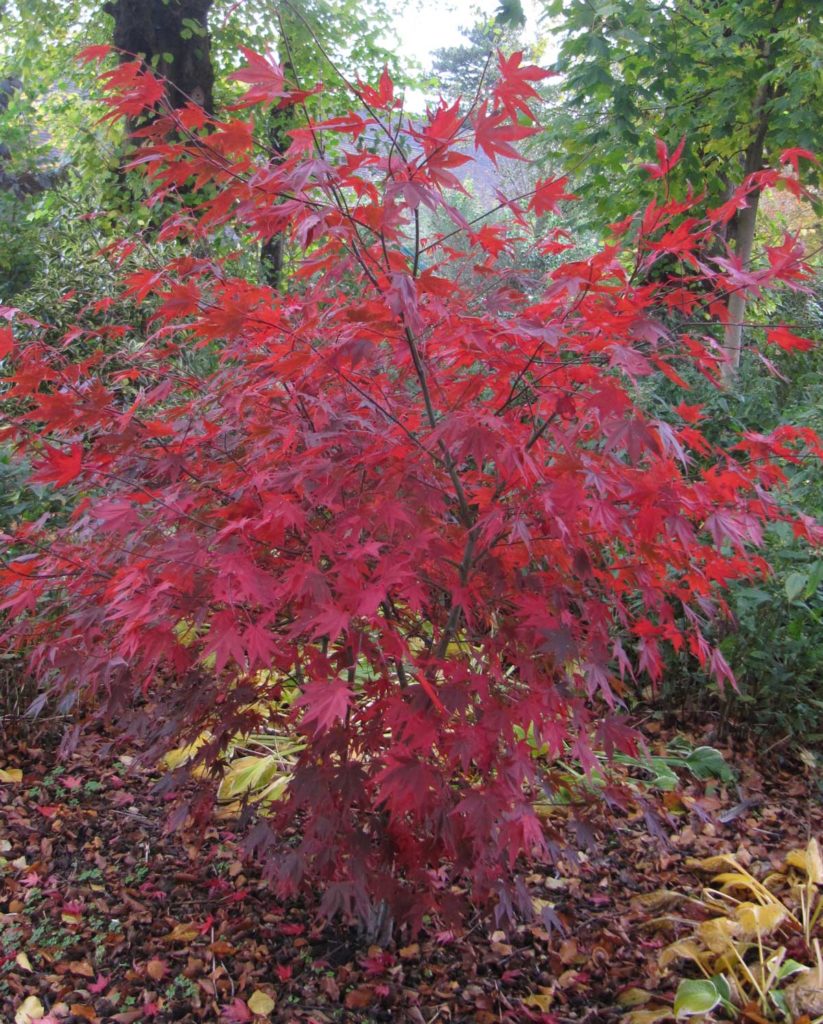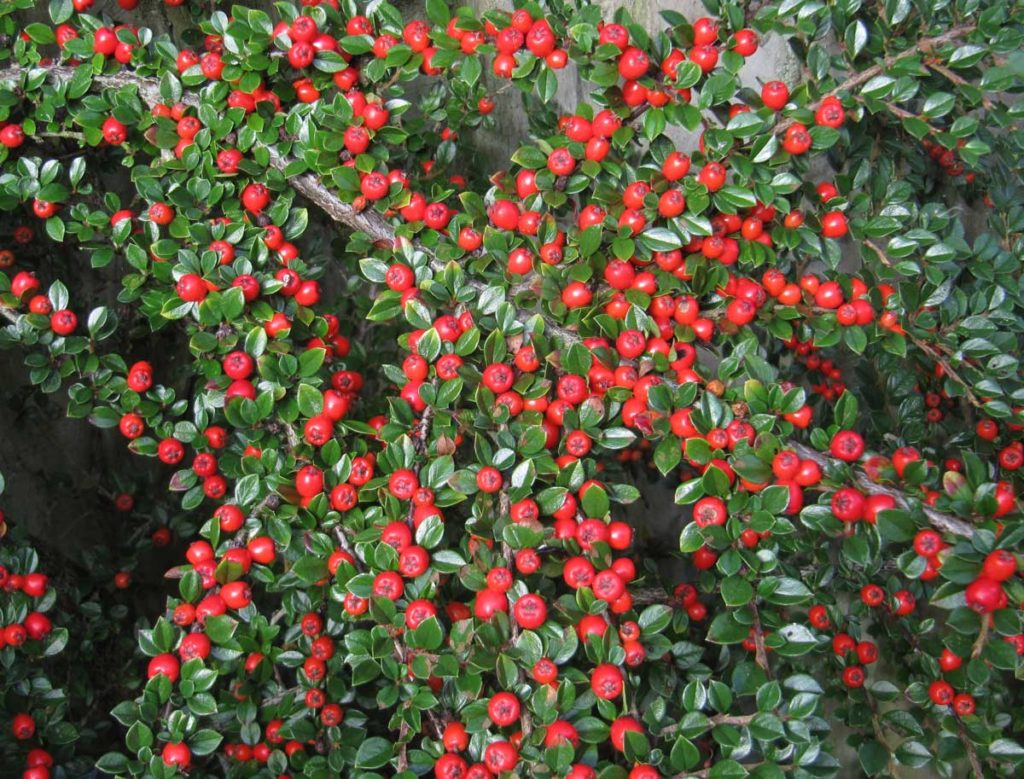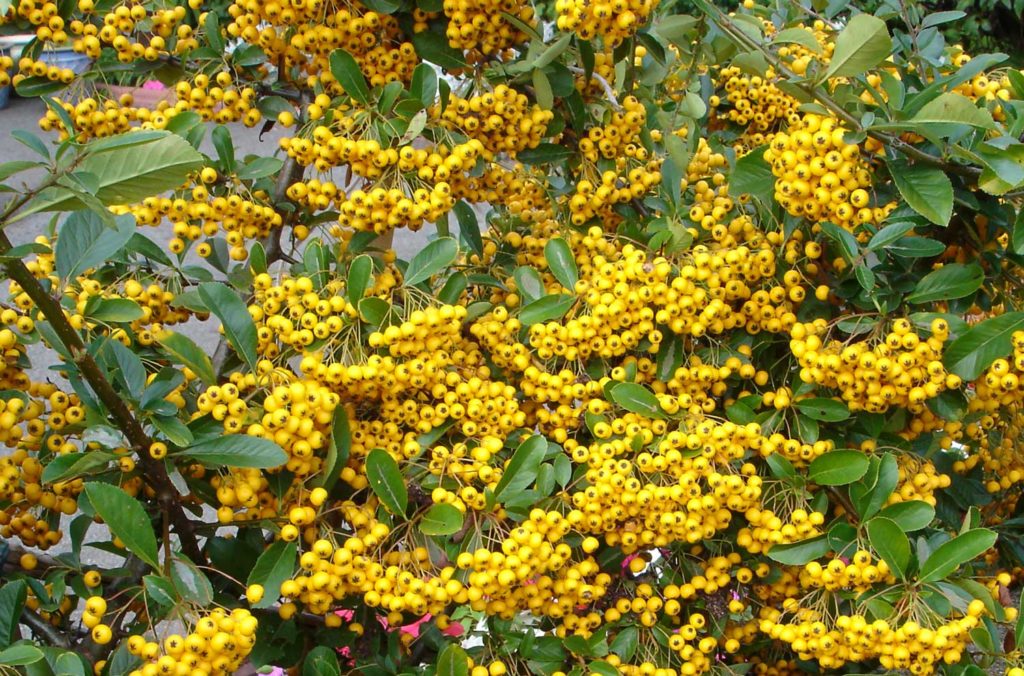November tends to be a time for tidying up the garden ready for winter. I am pruning a lot so I find my shoulders get a good work out when helping clients in this month.

Oranges and reds are the predominate colours from leaves on Acers, Cherries and Apple trees then there are berries. Cotoneaster shrubs come in many different varieties and species from large trees such as Cotoneaster Cornubia which forms an evergreen umbrella shape with white flowers in spring and scarlet berries in clusters in autumn. Smaller Cotoneasters include Cotoneaster horizontalis with herringbone stems studded with red berries that often persist into winter. Usually found at the base of fences after birds have perched there!

Hawthorns have scarlet berries in autumn so grow as a tree or as part of a hedge. Then you have rosehips either on wild roses or Rosa Rugosa varieties. The latter have large red cherry tomato sized hips. Pyracanthas with red, yellow and orange berries look bright in autumn but beware their needle spines! Rowan or Sorbus trees have berries in red, orange, pink or white. Sorbus Commixta is good for smaller gardens in that it grows neatly upright and has red/orange berries in autumn.

Remember that you don’t want the garden to be too tidy as leaving some dead leaves on plants will give homes for ladybirds to overwinter (although many of them come indoors to do this!). Clearing dead foliage from the pond marginal plants is vital to keep the water clear. Homes for frogs, toads and newts to overwinter include leaving stones and rocks round the pond with some evergreen plants so they can hide in crevices and ride out winter. Some frogs will stay in the water but can die when it freezes then you get the corpses floating up, which I find very distressing. Also have an undisturbed corner where logs or cut branches can be piled as these areas provide ideal hiding places for wildlife including hedgehogs.
Finish planting tulip bulbs in the ground or pots for next years display. Plant in well drained soil in sun for best effect and expect to replant in subsequent years as the bulbs lose vigour after their first year.
Gather fallen leaves into a separate compost bin or put in a bin liner to rot down. Keep the leaves moist to encourage rotting and after a couple of years you will have superb compost.
